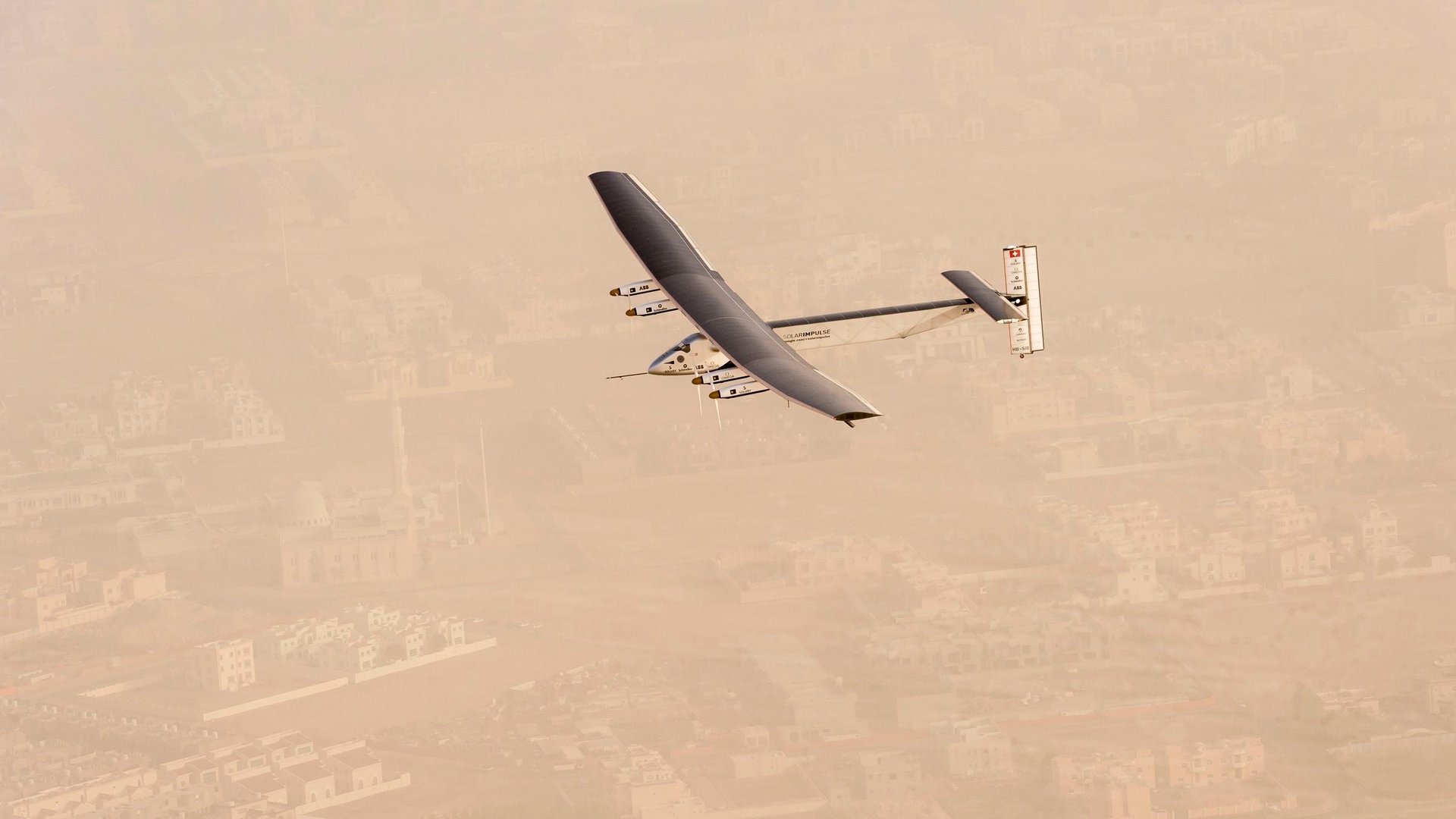The first around-the-world trip in a solar-powered aircraft began today
In the morning light of March 9, a long-winged plane took off from the Al Bateen Executive Airport in Abu Dhabi, United Arab Emirates, beginning the first leg of what its two pilots hope will be a historic journey.


In the morning light of March 9, a long-winged plane took off from the Al Bateen Executive Airport in Abu Dhabi, United Arab Emirates, beginning the first leg of what its two pilots hope will be a historic journey.
The plane is known as the Solar Impulse 2, and its significance is that its four propellers are powered entirely by the sun. The pilots, André Borschberg and Bertrand Piccard, intend to circumnavigate the globe with it—a 35,000-kilometer (77,000-mile) journey over 12 flights over 25 days in the next five months.
If they succeed, this will be the first around-the-world trip taken by a fully solar-powered aircraft. The itinerary includes stops in India, China, the US, Europe, and North Africa, and at each place the pilots will work with schools, governments, and NGOs to spread their message of clean energy.
For Piccard, a flight hobbyist who founded the Solar Impulse project in 2003, this would be his second notable circumnavigation of the globe. In 1999, he and another man completed the first non-stop around-the-world balloon trip, a journey that took just shy of of 20 days. Adventure seems to be in his blood: His father worked on the first submarine to travel to the ocean floor, and his grandfather piloted the first hot-air balloon to reach the stratosphere.
Borschberg is a pilot who also serves as CEO and lead engineer of Solar Impulse.
The Solar Impulse’s design departs drastically from that of your typical, fuel-powered aircraft. It has a wingspan of 72 meters (236 feet)—which is longer than a Boeing 747’s—but weighs just 2,300 kilograms (5,070 pounds), about one-eightieth of a 747’s weight. Those long wings are packed with 17,000 solar cells which capture the sun’s energy to power the plane. It is also incredibly slow by aviation standards, with a top speed of 140 kilometers per hour. A 747 has a top speed of about 955 kilometers per hour.
The Solar Impulse has proved that it can handle long flights. A prototype of the plane successfully flew across the US last year. Still, the trip will require major willpower from the pilots: The longest legs will require them to fly for five days straight.
If you’d like to keep up with the goings-on in the Solar Impulse cockpit and control center, there is a live stream: